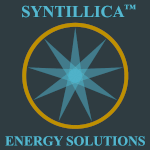
AIM-listed EnergyPathways, the UK energy transition company, has commenced engineering studies with KBR Inc and Hazer Group for its planned hydrogen and graphite production facilities, to be located in Barrow-in-Furness NW of England, as part of the Company's MESH project.
The integrated engineering study scope will use KBR's and Hazer's proprietary technologies in the design of low-carbon hydrogen, high grade graphite and low-carbon ammonia production facilities. Hazer and KBR have formed a global strategic alliance in clean hydrogen production solutions.
The commencement of these engineering studies through the KBR-Hazer alliance underscores the Company's commitment to partnering with Tier 1 global leaders in clean energy technology to deliver innovative, low-emission solutions vital for the UK's energy transition and industrial strategy.
This significant milestone follows the Memorandum of Understanding announced on 15 July 2025, in which EnergyPathways secured exclusive rights to evaluate, use and deploy Hazer's hydrogen production technology within the UK. It also follows the RNS dated 22 October 2025 in which EnergyPathways announced the commencement of techno-commercial studies with Hazer in relation to the high-grade synthetic graphite that will be produced as a by-product from the MESH low-carbon hydrogen production facility. Graphite has been identified by a number of countries, including the UK, as a critical mineral to meet their net zero, industrial growth and national security objectives.
MESH Hydrogen and Graphite Production
The planned hydrogen and graphite production facilities target an indicative hydrogen production capacity of 20,000 tonnes per annum (equivalent to 90MW), and also a graphite production capacity of 60,000 tonnes per annum. Under the Company's engineering studies agreement, the Hazer-KBR alliance will lead the engineering design and concept development studies for the proposed MESH hydrogen and graphite production facility. Work will commence immediately, with completion anticipated in early 2026 in line with the Company's MESH project timeline.
The major elements of the MESH project, including its low-carbon hydrogen and graphite production facilities, have been designated as a project of national significance by Ed Milliband, the Secretary of State for Energy Security and Net Zero. This allows the MESH project to access a streamlined planning and development consent process under the 2008 Planning Act, reserved for large-scale infrastructure developments of national significance.
Ben Clube, CEO of EnergyPathways, commented:
'The commencement of engineering studies with the KBR and Hazer alliance underscores EnergyPathways' commitment to partnering with tier-1 global leading companies to delivering innovative and affordable low-emission solutions vital for the UK's energy transition, industrial strategy and national security.
'With alternative hydrogen production technologies such as blue and green hydrogen looking increasingly challenged by high production costs, EnergyPathways aims to develop a hydrogen production pathway and decarbonisation solution that could be more affordable to Britain's taxpayers and energy consumers. EnergyPathways is targeting growth market opportunities in hydrogen-to-power and low-carbon ammonia production.
'A significant added benefit of EnergyPathways' hydrogen production project is the associated graphite production. The UK government has identified graphite as a critical mineral essential to the nation's energy transition and industrial strategy. With the UK 100% dependent on imports for its graphite needs, and China dominating global supply with over 80% of market share, the British government, and others such as the USA, are actively seeking to secure their own graphite supply chains.'
Hazer's CEO and MD Glenn Corrie said:
'We're delighted to see the EnergyPathways MESH project advancing rapidly, underpinned by its recognition as a nationally significant UK energy development. The EnergyPathways MESH project is strategically important and the integration of Hazer's low-cost hydrogen technology with the co-production of a low-emissions critical mineral represents a genuine gamechanger for the UK's energy transition plan. Hazer and KBR are excited to commence this concept study to support EnergyPathways progress to its next major milestone.'
About KBR and Hazer
KBR is a global engineering leader and technology solutions provider. KBR is recognised as the global leader in ammonia and methanol production with 50+% ammonia market share with over 250 licensed ammonia, methanol and hydrogen production plants. KBR is renowned for its expertise in delivering large-scale, technologically advanced projects and plays a significant role in the commercialisation and scaling of innovative technologies. Through its global strategic alliance with Hazer, KBR supports the deployment of Hazer's methane pyrolysis technology worldwide, further expanding its influence in the clean hydrogen sector and supporting energy transition initiatives.
Hazer Group Ltd, listed on the ASX, is recognised as a global leader in methane pyrolysis hydrogen technology. The company specialises in utilising its proprietary hydrogen production process, which converts methane into clean hydrogen and valuable by-products such as graphite, without emitting carbon dioxide. Hazer has established a global strategic alliance for the licensing of its world leading technology with KBR, a renowned leader in ammonia and methanol production, further enhancing the commercial potential and scalability of its technology. Hazer has developed a large number of partnerships with leading energy companies for the potential deployment of its technology across the world.
About MESH
MESH will be a new, large scale, energy storage and decarbonisation facility that is expected to provide a secure and dependable supply of affordable low-carbon energy for the UK market for over 25 years.
The MESH integrated energy system solution comprises; large-scale Long Duration Energy Storage ("LDES"), flexible low-carbon power capacity and low-carbon hydrogen and graphite production with the potential to branch into low-carbon ammonia production. MESH will connect its LDES integrated storage system using existing infrastructure to the UK grid and nearby offshore wind capacity to help harness value from some of the billions of pounds of the UK's wasted wind power.
The MESH system is designed to capture and store curtailed offshore wind power in offshore salt caverns as compressed air. The MESH energy storage system combines associated large-scale hydrogen, thermal and natural gas storage capacity in geo-storage features (the salt caverns). During periods of low renewable energy availability, the LDES stored energy resources will be utilised to generate low-carbon flexible power for the UK's grid via compressed air expansion, thermal energy and hydrogen-compatible gas turbine systems to generate electricity.
The MESH facility will also produce affordable low-carbon hydrogen using methane pyrolysis technology for which EnergyPathways has exclusive rights of use within the UK. The hydrogen can be used to further decarbonise the MESH flexible power generation system using its hydrogen compatible gas turbine system. The by-product of the MESH hydrogen production facility is a high-grade form of synthetic graphite.
In addition to supplying dispatchable low-carbon electricity to the grid, MESH-produced hydrogen can support the UK's emerging Project Union hydrogen network, contributing to broader emissions reductions across the energy system.
The MESH project is targeted to be operational by 2030, subject to government approvals and financing, in order to contribute to the Government's 2030 Clean Power ambitions. EnergyPathways aims to play its role in supporting the Government in accelerating the UK's energy transition.
Source: EnergyPathways











